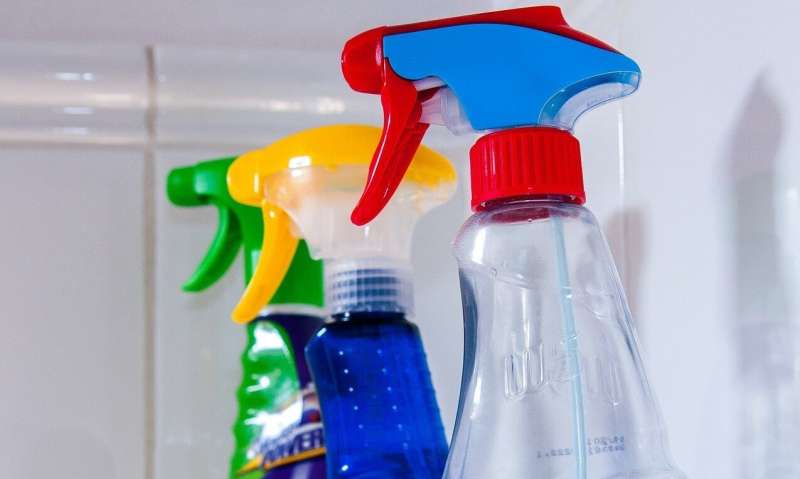What household cleaning products can inactivate SARS-CoV-2?

Doherty Institute researchers have tested the effectiveness of common household cleaning products' ability to inactivate SARS-CoV-2 on surfaces, showing that detergent, bleach and alcohol are highly effective.
Published in the latest issue of Viruses by MDPI, the research led by University of Melbourne Dr. Julie McAuley, a Senior Researcher at the Peter Doherty Institute for Infection and Immunity (Doherty Institute) is one of the first studies to focus testing on common cleaning chemicals typically found in the home used to decontaminate surfaces.
While vaccinations are key to preventing severe disease and hospitalization caused by SARS-CoV-2 infection, the virus can still infect vaccinated individuals. As home isolation continues to be utilized as a tool to reduce transmission of COVID-19 in public health responses globally, a need arose to make scientific findings more accessible to the public by testing the effectiveness of common household cleaning products.
A survey led by the Centers for Disease Control and Prevention (CDC) U.S. revealed that more than 80% of respondents did not feel they knew how to disinfect their home and clean safely to prevent SARS-CoV-2 transmission, despite increasing their household cleaning efforts.
To address this issue, Dr. McAuley's research team tested the ability of cheap and readily available household cleaning products to render SARS-CoV-2 non-infectious, which included vinegar, bleach, dishwashing detergent and ethanol to represent alcohols available in the house.
"Our findings show that detergent, bleach and alcohol are highly effective at making SARS-CoV-2 non-infectious, but vinegar does not work at all," Dr. McAuley said.
The study findings reveal the minimum concentration that users can dilute the household cleaning product and still inactivate SARS-CoV-2.
"To make an effective cleaning solution, it's as simple as adding a similar amount of detergent to water as you would for your dishes (2mL in 1 liter), then wiping over the potential SARS-CoV-2 contaminated surface and allowing it to dry," Dr. McAuley said.
"For bleach, our results show that as little as 5mL can be added to 1 liter of water and could be ideal to disinfect bathroom surfaces. Alcohol containing handwashes, or solutions used for cleaning surfaces, must contain more than 40% alcohol to be effective."
The study also tested whether combining the household products would increase their effectiveness and found that there was no benefit.
"Surprisingly, when we combined bleach and detergent, we did not see increased virucidal potential for inactivating SARS-CoV-2 compared to using each component on their own," Dr. McAuley said.
"We must also warn against combining chemicals in an attempt to increase their virucidal activity, as some household disinfectants contain buffering agents that we found may counteract the effective virucidal concentration of the other chemical it was mixed with."
All tested dilutions, products and combinations have been published in the study and are available for the public to use to inform their COVID cleaning plans.
"We wanted to provide all the information required to assist people to safely clean potentially contaminated surfaces, reducing the potential for transmission in their homes and workplaces," Dr. McAuley said.
More information: Catarina F. Almeida et al, The Efficacy of Common Household Cleaning Agents for SARS-CoV-2 Infection Control, Viruses (2022). DOI: 10.3390/v14040715

















